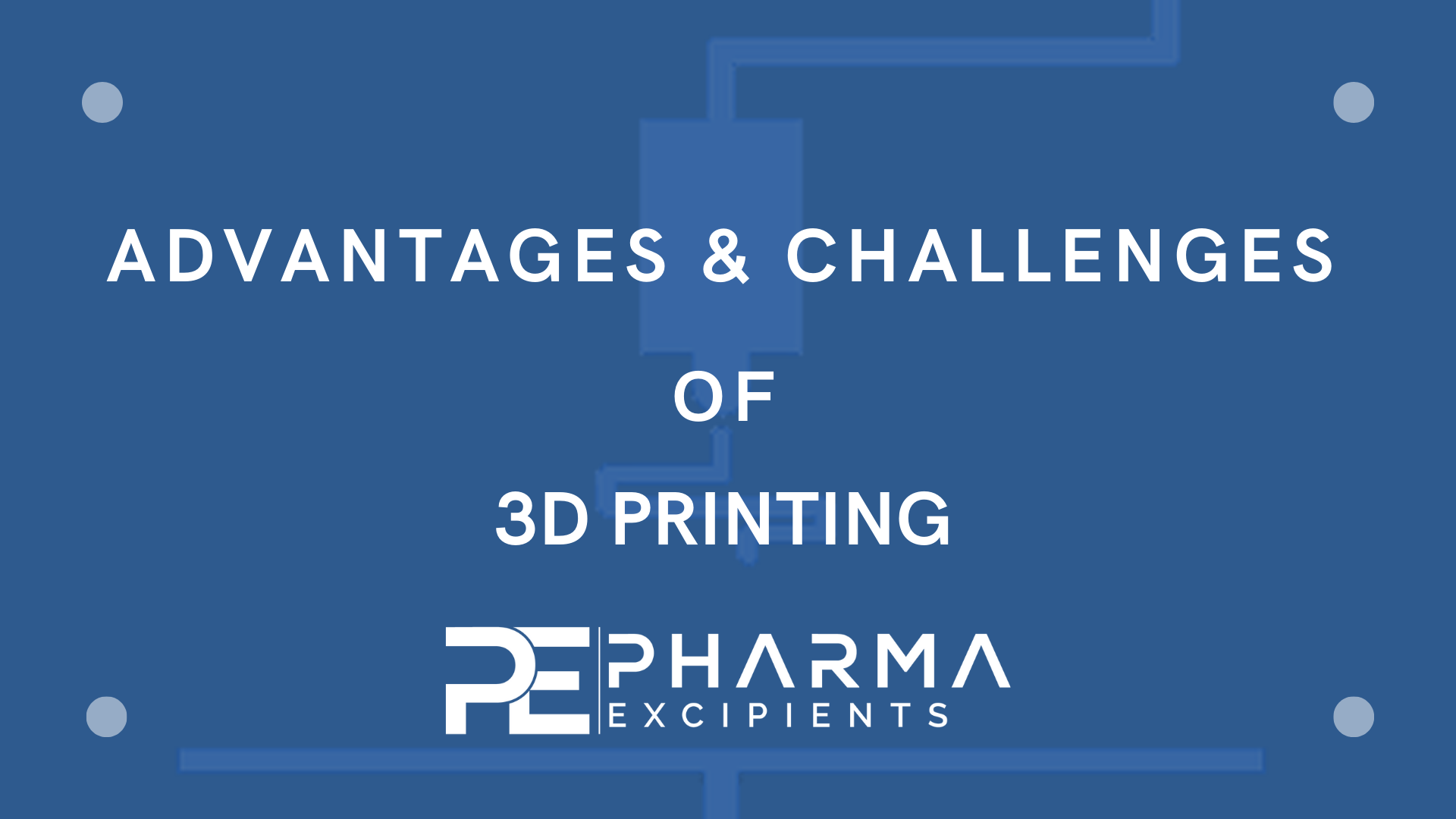Advantages and challenges of pharmaceutical 3D printing

The utilization of 3DP as manufacturing process might provide some potential benefits for the pharmaceutical industry as well as for patients. In regard to customization and tailoring of pharmaceutical dosage forms, 3DP appears to have a high potential as on-demand manufacturing process. Compared to conventional manufacturing processes, 3DP technology seems to be rapidly adapting and flexible. Besides the possibility of printing customized and complex structures, 3DP might further be used to adjust the drug release characteristics of a dosage form as needed.
The implementation of 3DP might shorten the overall manufacturing chain significantly since manufacturing steps like granulation, milling, sieving, tableting, and coating would become redundant [34]. Further, 3DP provides the opportunity to be set up as an on-demand manufacturing process in community and hospital pharmacies. The on-demand manufacturing might shorten lead times as well as decrease the amount of wasted material, since only small batches with the required amount of dosage forms would be printed [108]. Furthermore, 3D-printers generally have a small footprint, which results in only a small percentage of the production area being occupied by the equipment. Therefore, 3D-printers are particularly suitable as stationary manufacturing equipment in community and hospital pharmacies. Recently published studies demonstrated the ability of printing tablets with Braille and Moon patterns, allowing visually impaired patients to identify the medication and therefore reducing the risk of medication errors [53].
Alongside with the advantages and opportunities provided, 3DP has to overcome major challenges [109]. These challenges can be classified into three categories: 1. Technical challenges; 2. Regulatory challenges; 3. Good manufacturing practice (GMP) challenges.
1. Technical challenges:
Depending on the applied printing technology, printed objects might have insufficient mechanical properties and possess a high friability, which makes the further processing of these dosage forms rather difficult. Especially during packaging of printed tablets defects might occur, which might lead to rejection of complete batches. For some of the 3DP technologies like BJ or SLA, a lot of unprinted material accumulates after the printing process. On the one hand, technical solution must be found to avoid excessive amount of unprinted material and on the other hand clarification is needed whether unprocessed material might be reused for further printing. Compared to established pharmaceutical manufacturing processes, 3DP is lacking in process control strategies. During conventional production of tablets, in-process control (IPC) is carried out to monitor the production intensively. For 3DP processes, IPC technologies are currently not commonly implemented, by which printed tablets are assessed analytical after being printed. Further, 3DP is a time-consuming process, whereas conventional tableting equipment is able to manufacture several hundred thousand tablets per hour (depending on the scale of tablet press).
2. Regulatory:
From a regulatory perspective, 3D-printed dosage forms have to meet the same requirements as conventionally manufactured dosage forms. However, at this point a big gap is existing in the regulatory framework. While for established processes guidelines are well implemented and standardized, the process of 3DP is lacking any guidelines from regulatory authorities. Health authorities around the world recognized the lack of guidance and initiated the process of developing standards and defining practical guidelines. The FDA designated two internal laboratories, the Laboratory for Solid Mechanics as well as the Functional Performance and Device Use Laboratory within the FDA´s Office of Science and Engineering Laboratories (OSEL), to explore the future potential of 3DP in pharmaceutics [110]. The work of these two units should help to gain knowledge in the first step and to help developing standards as well as identifying critical aspects affecting the product safety. Nevertheless, health authorities must put more effort into defining standard processes and providing guidance for pharmaceutical manufacturers.
Furthermore, liability as well as responsibility must be discussed in case of occurred incidents. If it is intended to use 3DP as on-demand manufacturing process in community and hospital pharmacies, different scenarios for supply chain are possible. Regarding FFF technology, drug-loaded filaments must be provided by external chemical or pharmaceutical companies and the printing process executed in the pharmacy itself. The scenario raises the question of how incoming goods should be tested with the equipment at the pharmacy and who would be responsible for the release of the starting material for manufacturing [111].
3. GMP challenges
Moreover, qualification standards for 3D-printer manufacturers must be defined to meet GMP requirements. Especially, the topic of cleaning validation should be addressed to avoid crosscontamination. As long as cleaning concepts are not in place and validated, pharmaceutical manufacturers are obliged to use 3D-printers as dedicated equipment. The mentioned regulatory and GMP challenges must be tackled together by health authorities and pharmaceutical manufacturers to establish 3DP as manufacturing process for pharmaceutical dosage forms.
Download the full dissertation about 3D printing here!
See Part 1: “Introduction to 3D-printing” here and Part 2: “Technologies in 3D-printing” here!
Article information: Ilias El Aita. Inaugural-Dissertation: Manufacturing of solid dosage forms using pressure-assisted microsyringe 3D-printing, 2021. Heinrich-Heine-University Düsseldorf.
See the references in the PDF document!


